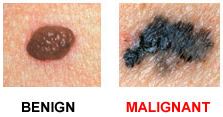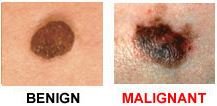July 11, 2019
It’s that time of year again when sun exposure is at its highest – it’s not just officially summer, it’s mid-summer and by now you may have already experienced a sunburn. We interviewed Dr. Charles Powell, Founder and Executive Vice President of Clinical Operations to learn more about skin health, sunburns and skin cancer.
We all know that sunburns are a nuisance and something that almost everyone has dealt with including everything from the not so serious to the very serious side effects –
- Discomfort, blistering, reddening of skin causing sensitivity to touch
- Sun poisoning – causes series of issues including dehydrations, fatigue, inflammation and temperature de-regulation
- Since our skin is the largest organ on our body and responsible for many activities in our body, it can also affect the functioning of many other different systems
Not So Fun Fact
More than one-third of adults and nearly 70% of children admit they’ve gotten sunburned within the past year, according to the CDC.
What Causes Sunburn
Any time your skin is exposed to the sun, you run a risk of developing a sun burn.
The sun gives off three wavelengths of ultraviolet light:
- UVA
- UVB
- UVC
UVC light doesn’t reach the Earth’s surface; skin damage is caused by both UVA and UVB rays.
Skin Cancer Education
There are three main types of skin cancer that you can develop – each has a different cell behind it and has different warning signs, treatment options and impact to your lifestyle.
Basal Cell Cancer
This is the most frequently occurring form of all cancers. In fact, more than one out of every three new cancers are skin cancers and a majority of those are the basal type. Signs that you might have something going on include inflamed area of skin, an area that bleeds easily, and finally an area on your skin that won’t heal, usually found on areas that have had long-term exposure to UV radiation from sunlight like you head, face and neck.
How Do I Treat It?
The first step is to get a biopsy – most primary care providers can do this for you and you can also visit a demonologist. Treatment will depend on the pathology of the study, the depth of the legion and any past issues. Depending on what the report says, it can include if there is spreading or if also a next step, a lymph node biopsy, is needed.
Most often, it can be handled by cutting out the affected area if seen within a couple of weeks of the identified spot. The worst thing to do is to not go at all.
Cryotherapy is also a treatment options where the area is frozen off – it just depends on the affected area and what you and your provider decided to do.
Squamous Cancer Cell
This is the second most common cancer cell in the US and is similar to Basal cancer cells as is most often found on the areas of the body that has been damaged by UV rays from the sun or tanning. Usually this skin includes the head, neck, chest, upper back, arms and legs. Similar treatment options for Basal cancer cells are applicable to this type of cancer cell. Again, the treatment will depend on many factors including and will be up to you and your provider to develop the best treatment plan.
What’s the Difference?
One difference from basal cancer cells, is that while they don’t spread as often as other types, they do spread more often than basal cell cancers. They can itch, bleed or be somewhat painful, but most often they are seen or felt before it reaches that point.
Melanoma
This is the worst type of skin cancer and is also known as malignant melanoma. If caught early, studies show that about 64% of cases can be cured before it spreads to lymph nodes; at which point the survival rate drops. There are four types, with the most common type being the spreading kind usually on arms, legs, chest, back – areas often exposed to the sun.
What Does Melanoma Look Like?
There are warning signs of Melanoma, called the “ABCDEs” – if you have a spot or mole that follows these warning signs, you should follow-up with your provider at your earliest convenience. For more information you can also visit www.skincancer.org (pictures provided by skincancer.org).
A – Asymmetry
Malignant melanoma moles are not symmetrical; whereas benign moles are symmetrical.

B – Border
This warning sign means that the borders of a melanoma are uneven – benign moles have smooth, even borders.

C – Color
Benign moles are mostly one color, usually a shade of brown. But a melanoma mole will have different colors – brown, black, tan and can also become red, white or blue.

D – Diameter
Melanoma moles are usually larger than benign ones; think about being larger than the eraser on you pencil.

E – Evolving
Benign moles will stay and look the same over time, where a melanoma mole will evolve over time including changes in shape, color, starts to bleed or begins to itch.

What Does Treatment Look Like
The first step will be to biopsy the spot and to also understand the depth of the sore or affected area. Almost all of these require lymph node biopsy.
What are the Survival Rates?
Studies indicate that if a patient can detect melanoma early and get treatment, the five-year survival rate is around 98%. However, that rate falls to 64% if the disease reaches to the lymph nodes and drops to a 23% rate if it spreads to other organs.
Did You Know?
Right now most cancers are measured at a 5 year survival rate; it’s how we currently measure the efficacy of treatments. Right now, new treatments being tested include using our own immune system.
Best Advice…Take Care of Your Skin
The best advice for avoiding skin cancer and other negative effects of sun damage include:
- Avoid sunlight during peak hours, from 10AM – 4PM
- When you are outside and exposed, wear sunscreen BUT apply 30 – 45 minutes before exposure
- Re-apply every 40 – 80 minutes when outside
- Minimum of SPF 30 recommended
- Sometimes clothes are not ad adequate – a typical t-shirt has an SFP 15, so if you are wearing something light, add some sunscreen to your skin anyway
What Do I Do If I Think I Have a Strange Area on My Skin?
The best advice, is no matter what your age, if you haven’t been – start taking care of your skin. If you think you have something on your skin that doesn’t look right, especially if you are experiencing some of the signs mentioned above, make an appointment with your provider. Early detection can go a long way in protecting your health.
And…wishing you Happy Summer from Healthcare Associates of Texas!
DISCLAIMER
The information featured in this site is general in nature. The site provides health information designed to complement your personal health management. It does not provide medical advice or health services and is not meant to replace professional advice or imply coverage of specific clinical services or products. The inclusion of links to other web sites does not imply any endorsement of the material on such websites.